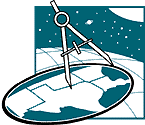Classroom Compass |
Classrooms for Tomorrow |
Classrooms for Tomorrow
Computers, genetic technology, global warming, population growth, space
exploration...it seems clear that science and technology hold great promise and
challenge for the coming generations. How will education prepare our children for
their rapidly changing world?To address such questions, various groups of scientists, mathematicians, educators, and others have been working to define educational expectations for the future. Methods of instruction are under scrutiny, standards and curriculum frameworks are emerging and a new picture of instruction is coming into focus. Successful classrooms will be based on student cooperation and interaction - communities of learners rather than groups of passive recipients of information and facts. Teachers will promote early exploration of higher level concepts and content will be selected to allow in-depth exploration of key ideas. Learning will be defined as a set of intellectual tools rather than an accumulation of data and procedures.
Benchmarks and Standards
How can teachers achieve such ideal conditions? Where can you find an outline of
essential concepts, suggestions for arranging class communities, or ideas for
specific instructional activities? In 1989 the National Council of Teachers of
Mathematics (NCTM) published Curriculum and Evaluation Standards for School
Mathematics, the product of three years' work by mathematics teachers,
supervisors, researchers, and university mathematicians. That first book
presented the fundamental content that should be included in the school
mathematics curriculum. Two companion volumes, Professional Standards for
Teaching Mathematics (1991) and Assess-ment Standards (currently in draft form),
provide specific guidelines and practical examples for teaching and evaluating
mathematics instruction. Reform in science instruction has taken a similar path. Project 2061, a diverse group of teachers, administrators, scientists, mathematicians, historians, engineers, and learning specialists gathered by the American Association for the Advancement of Science (AAAS) has produced two books (Science for all Americans, 1989, and Benchmarks for Science Literacy, 1993) that present expectations for general science understanding and the specific skills students must master to achieve it. In Science for All Americans, the authors note: "...schools do not need to be asked to teach more and more content, but rather to focus on what is essential to scientific literacy and teach it more effectively." The Benchmarks provide some practical ways of determining and teaching that essential content.
Images for the Future
Schools, teachers, and the community must be willing to accept new standards that
address the need for long-term intellectual growth in a world that is rapidly
changing. Teachers will be presenting fewer facts and figures and more in-depth
exploration ("less is more") of larger themes such as change, patterns, models
and systems. Emphasis will be less on definitions and classification skills and
more on student-directed exploration and theorizing ("hands-on/minds-on"
approaches). New knowledge will be built on the experiences and understanding
that students bring to the classroom ("constructivism"). The role of the teacher
will become less that of an expert and more a facilitator, a guide to student
exploration. These changes are not easy. Teachers may find it difficult to place the responsibility for learning in the hands of students. Using the learner's, rather than the teacher's, knowledge is an unsettling, and for some, counterintuitive idea. However, we need only think about the influence of the outside world—television, computers, the marketplace—to realize that no one comes to the classroom empty of experience and knowledge, be it formal or informal. Students can take their current conceptions and build on them with new experiences from the classroom to produce a powerful and lasting understanding.
Classroom Compass Back Issues: Issue 1.1 Contents: Next
